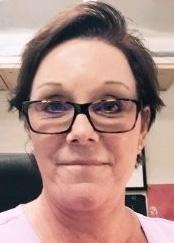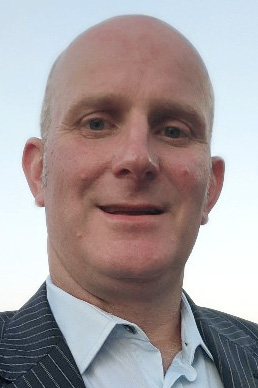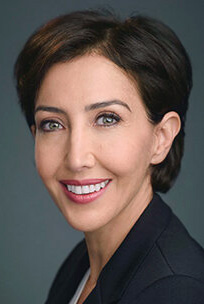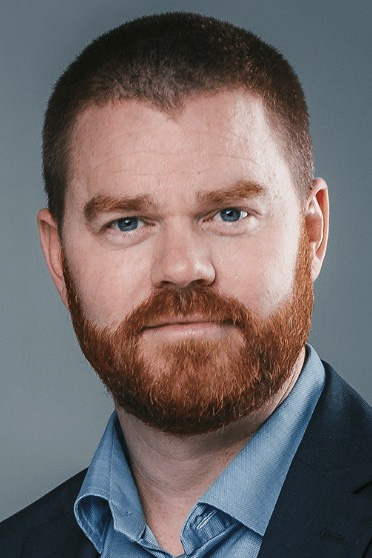

Experts at a CircleID and Edgemoor Research Institute webinar debated the challenges of domain registration data access in a post-GDPR world. Panelists explored the tension between privacy laws and legitimate data requests, the role of automation in disclosure decisions, and the need for a scalable, trust-based framework to balance compliance, cybersecurity, and enforcement interests. more
Public Interest Registry (PIR), the nonprofit managing the .ORG domain, recently announced it now oversees 11 million registrations. Jon Nevett, PIR's CEO, attributes this growth to what he describes as a "responsible" expansion, emphasizing a focus on security and community support. more
Brian Krebs reporting in Krebs on Secruity: "The Obama administration is inviting leaders of the top Internet domain name registrars and registries to attend a three-hour meeting at the White House next month about voluntary ways to crack down on Web sites that are selling counterfeit prescription medications..." more
 The .ORG domain is at a crossroads: What will it be? A simple registry offering domain names for organizations, individuals and others? Or something bigger, as Ethos Capital and the Public Internet Registry propose? Will proposed changes make .ORG better? Or worse? There are valid points on both sides, but as an Internet safety advocate who for two decades has worked to teach children how to be safe online, stop the next young girl from being sex trafficked, and... more
The .ORG domain is at a crossroads: What will it be? A simple registry offering domain names for organizations, individuals and others? Or something bigger, as Ethos Capital and the Public Internet Registry propose? Will proposed changes make .ORG better? Or worse? There are valid points on both sides, but as an Internet safety advocate who for two decades has worked to teach children how to be safe online, stop the next young girl from being sex trafficked, and... more
 Traditionally, top-level domains (TLDs) have been almost exclusively marketed by registries through their registrar channel. In a never-ending cycle of driving and sustaining sales, registries often resort to discounting and "promotional pricing." The competition for prime shelf space for a TLD is fierce, with sales and distribution largely controlled by the channel... In this chaotic and cluttered channel, it's not surprising that TLDs have traditionally been less than successful in defining their brand and delivering a unique value story for their product. more
Traditionally, top-level domains (TLDs) have been almost exclusively marketed by registries through their registrar channel. In a never-ending cycle of driving and sustaining sales, registries often resort to discounting and "promotional pricing." The competition for prime shelf space for a TLD is fierce, with sales and distribution largely controlled by the channel... In this chaotic and cluttered channel, it's not surprising that TLDs have traditionally been less than successful in defining their brand and delivering a unique value story for their product. more
 Would you be interested in helping guide the future of the Public Interest Registry (PIR), the non-profit operator of the .ORG, .NGO and .ONG domains? If so, the Internet Society is seeking nominations for three positions on the PIR Board of Directors. The nominations deadline is 23:00 UTC on Thursday, February 1, 2018. Find out more about the positions and the required qualifications. more
Would you be interested in helping guide the future of the Public Interest Registry (PIR), the non-profit operator of the .ORG, .NGO and .ONG domains? If so, the Internet Society is seeking nominations for three positions on the PIR Board of Directors. The nominations deadline is 23:00 UTC on Thursday, February 1, 2018. Find out more about the positions and the required qualifications. more
In order to provide more security for the Domain Name System (DNS), a group of large domain-name registries and registrars has got together with IT security providers and government agencies to launch a new workgroup: the "Registry Internet Safety Group" (RISG). The announcement was made by the Public Internet Registry, which operates the .org domain, and its backend provider Afilias. more
 Everyone seems to be talking about how the big boom is set to happen in India for domain names, and there are significant factors to ensure that this growth happens. The internet spends and E-commerce usage is fast becoming the face of modern India, a part of everyday lifestyle. Although awareness is still the biggest barrier domain name Registrars face with consumers, there are signs of significant improvement in trust, usability and the adoption of web services. more
Everyone seems to be talking about how the big boom is set to happen in India for domain names, and there are significant factors to ensure that this growth happens. The internet spends and E-commerce usage is fast becoming the face of modern India, a part of everyday lifestyle. Although awareness is still the biggest barrier domain name Registrars face with consumers, there are signs of significant improvement in trust, usability and the adoption of web services. more
 The 2010 Domain Pulse, hosted by SWITCH (the .CH registry) was held in the snowy Swiss city of Luzern. Domain Name Security (DNS) was of particular importance in this year's meeting with DNSSEC being implemented in the root zone in 2010 by ICANN, and by many registries in the next few years. ICANN plan to have all root servers signed with DNSSEC by mid-2010 Kim Davies, Manager, Root Zone Services at ICANN told the meeting, starting with the L root server, then A root server with the last being the J root server as all are gradually signed. more
The 2010 Domain Pulse, hosted by SWITCH (the .CH registry) was held in the snowy Swiss city of Luzern. Domain Name Security (DNS) was of particular importance in this year's meeting with DNSSEC being implemented in the root zone in 2010 by ICANN, and by many registries in the next few years. ICANN plan to have all root servers signed with DNSSEC by mid-2010 Kim Davies, Manager, Root Zone Services at ICANN told the meeting, starting with the L root server, then A root server with the last being the J root server as all are gradually signed. more
 We respect the right of all parties who wish to express a point of view on the Internet Society's sale of Public Interest Registry ("PIR") to Ethos Capital. However, it's important those views are based on facts -- which has not always been the case. Some have expressed concern that for-profit ownership of .ORG will automatically mean .ORG prices will rise dramatically, or that .ORG's principles will change. more
We respect the right of all parties who wish to express a point of view on the Internet Society's sale of Public Interest Registry ("PIR") to Ethos Capital. However, it's important those views are based on facts -- which has not always been the case. Some have expressed concern that for-profit ownership of .ORG will automatically mean .ORG prices will rise dramatically, or that .ORG's principles will change. more
.CO Internet closed its chapter as an independent company and became part of the publicly traded Neustar on Monday afternoon. The Sterling, Va.-based provider of real-time analytics and registry services was also already providing a critical piece of .CO Internet's technology infrastructure. more
 Ethos Capital has recently announced that it has voluntarily proposed to add an amendment to Public Interest Registry's (PIR) .ORG Registry Agreement with ICANN in the form of a Public Interest Commitment, also known as a "PIC." In the press release Ethos indicated that the PIC would become "legally binding" and "enforceable" both by ICANN and by members of the community. I anticipate that some would ask a number of logical questions: How would that work in practice? more
Ethos Capital has recently announced that it has voluntarily proposed to add an amendment to Public Interest Registry's (PIR) .ORG Registry Agreement with ICANN in the form of a Public Interest Commitment, also known as a "PIC." In the press release Ethos indicated that the PIC would become "legally binding" and "enforceable" both by ICANN and by members of the community. I anticipate that some would ask a number of logical questions: How would that work in practice? more
The operator of the .ORG top-level domain, Public Interest Registry (PIR), issued a statement assuring its community of registrants that it "not raise prices unreasonably." Also, it has no specific plans for any price increases. more
It has been reported that Jay Westerdal, CEO of ‘.feedback’, has confirmed the registry has cured the breached in response to ICANN ruling reported last month. more
 One of the key issues for the Domain industry is how to accurately predict year-on-year how many customers will renew their domain names. It's fairly common that a registry in the first year has around a 60% renewal rate, and following the first year, that increases to around 80 and 85 percent on the remaining domain names. But how can we understand better why this is so, how can this be more accurately predicted, and what can be done to help maximize these opportunities? more
One of the key issues for the Domain industry is how to accurately predict year-on-year how many customers will renew their domain names. It's fairly common that a registry in the first year has around a 60% renewal rate, and following the first year, that increases to around 80 and 85 percent on the remaining domain names. But how can we understand better why this is so, how can this be more accurately predicted, and what can be done to help maximize these opportunities? more